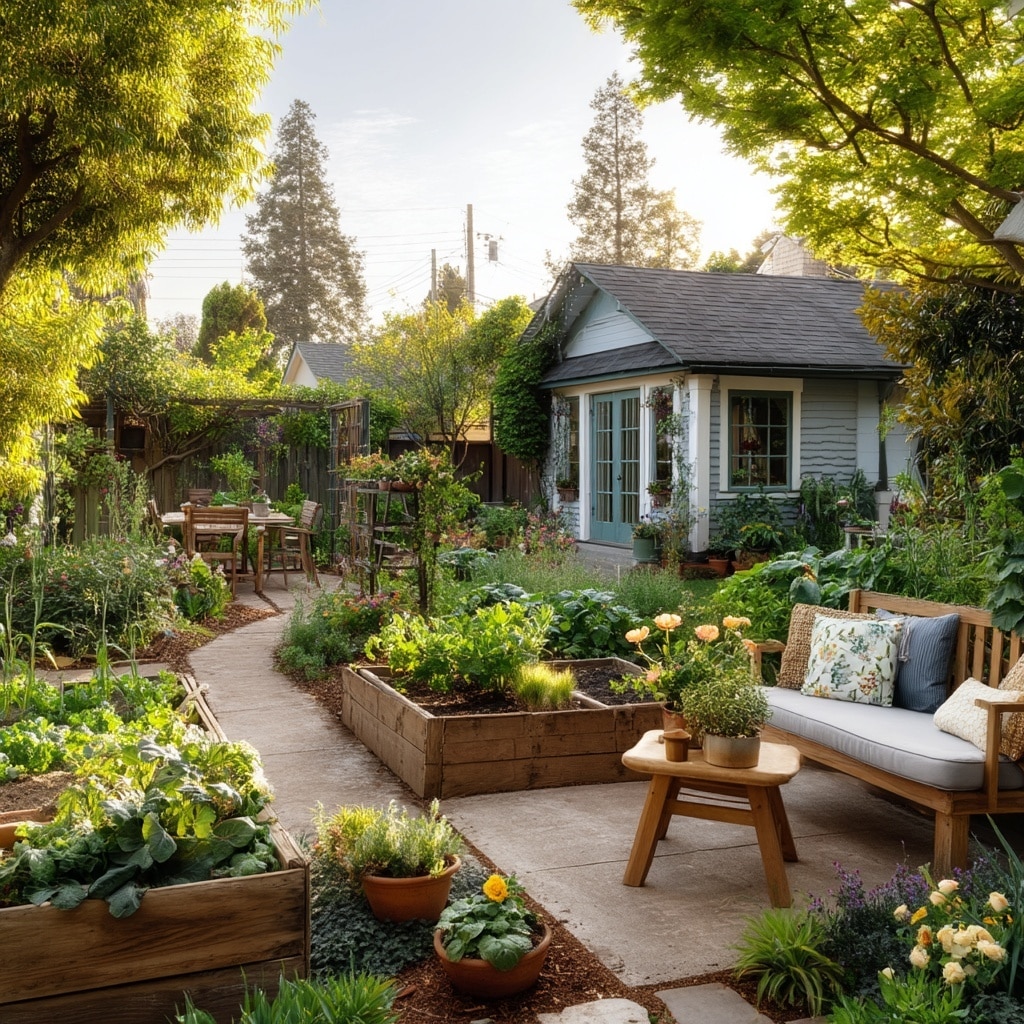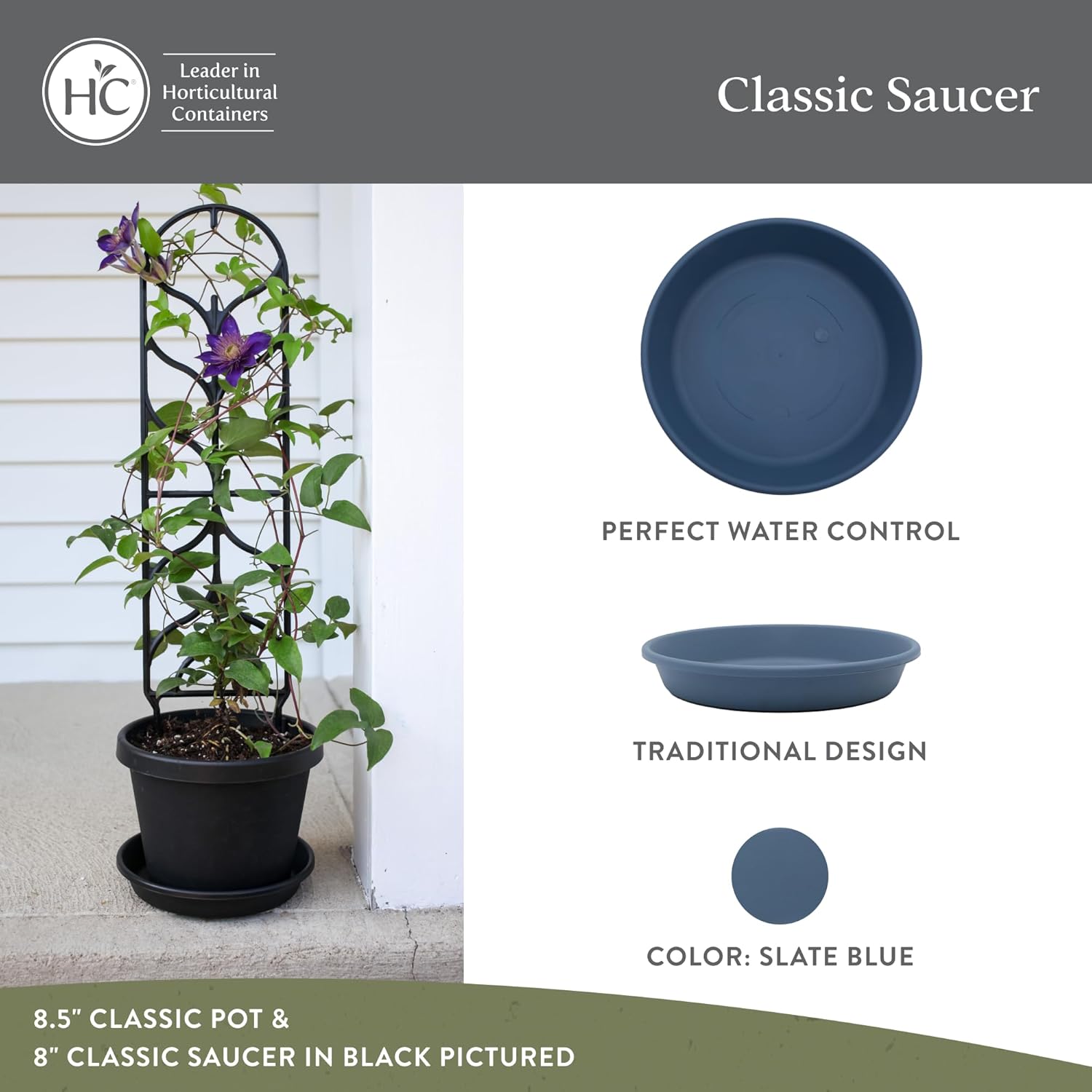Creating a home garden is one of the most rewarding ways to add beauty, calm, and purpose to your living space—no matter how big or small your outdoor area may be. Whether you’re working with a sprawling backyard or a modest balcony, the right layout and a few creative touches can transform any spot into a vibrant sanctuary.
This guide features the best home garden ideas for small spaces, helping you turn limited areas into lush, colorful retreats. From vertical planters to edible landscapes, these tips are tailored to suit beginner gardeners and seasoned green thumbs alike. Let your home garden reflect your style, boost curb appeal, and even provide fresh herbs or vegetables—all in one space-saving setup.
Table of Contents
Why Do You Need a Home Garden?
A home garden offers more than just visual charm—it’s a lifestyle upgrade. Beyond beautifying your outdoor area, gardening fosters wellness, sustainability, and a deeper connection to nature. Whether you grow flowering plants, herbs, or vegetables, tending to a garden provides a daily rhythm that’s both calming and purposeful.
Gardening at home can significantly cut grocery costs by supplying fresh, organic produce just steps from your kitchen. Even a compact garden setup—like a few containers or a vertical trellis—can yield seasonal vegetables, aromatic herbs, or colorful blooms.
Mentally, gardening has proven benefits: it relieves stress, enhances mood, and encourages mindfulness. Plus, a garden supports biodiversity by attracting pollinators like bees, butterflies, and birds.
Environmentally, a home garden contributes to cleaner air, reduced carbon footprint, and better stormwater management. It’s a simple yet powerful way to care for both your space and the planet.
Vertical Gardens: Maximizing Small Spaces

When space is limited, vertical gardening is a game-changer for your home garden. Instead of expanding outward, you grow upward—making the most of walls, fences, and narrow corners that would otherwise go unused.
Wall-mounted planters, hanging baskets, and trellises are simple tools that instantly expand your growing area. Climbing plants like ivy, tomatoes, beans, or flowering vines thrive in vertical setups. They’re visually striking and add height, texture, and color to your garden design.
For urban dwellers or apartment residents, vertical gardens are ideal. A single balcony wall can host herbs, salad greens, or even small vegetables in tiered planters or pocketed fabric systems. Just ensure your vertical garden receives adequate sunlight and water flow—drip irrigation systems work well in these setups.
By elevating your plants, you not only save space but also improve airflow and reduce pest issues. It’s a smart, efficient way to enhance your home garden, especially in compact living environments.
Indoor Herb Gardens: Fresh Flavors at Your Fingertips
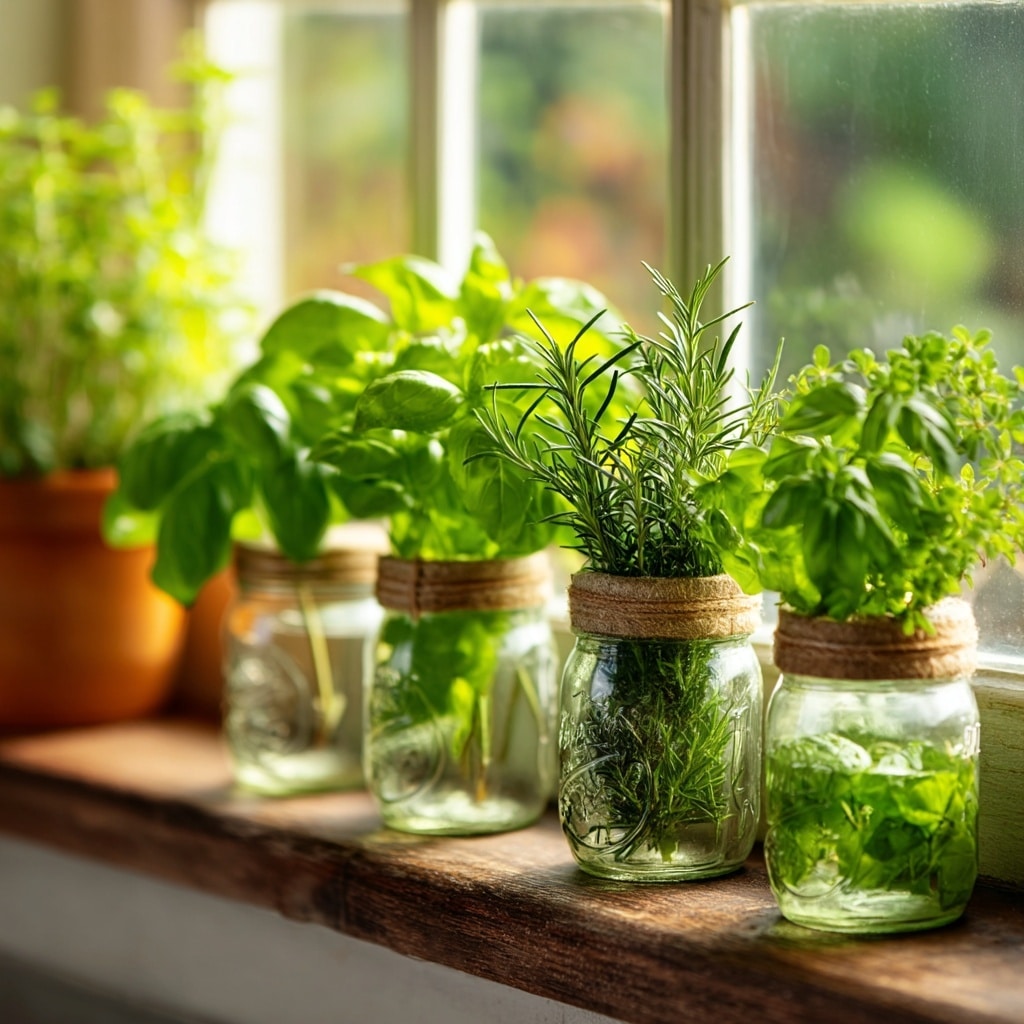
Bringing a slice of nature indoors, an indoor herb garden is both practical and decorative—perfect for any home garden setup, especially if outdoor space is scarce. It’s a compact solution that keeps your favorite culinary herbs within arm’s reach, right where you need them most: in the kitchen.
Start with herbs like basil, mint, thyme, parsley, or rosemary. These thrive indoors with minimal effort and adapt well to sunny windowsills or kitchen counters. Use small pots, recycled mason jars, or a vertical shelf to organize your plants neatly and attractively.
The key to success is sunlight and drainage. Most herbs need at least 6 hours of light daily, so choose a bright spot. Water consistently, but avoid overwatering—herbs dislike soggy soil. Many indoor gardeners also use LED grow lights to supplement light during the winter months.
With a little care, your home garden can flourish inside your home too—offering fresh ingredients, natural aroma, and a beautiful green accent to your interior décor.
Container Gardening: Versatile and Mobile Solutions
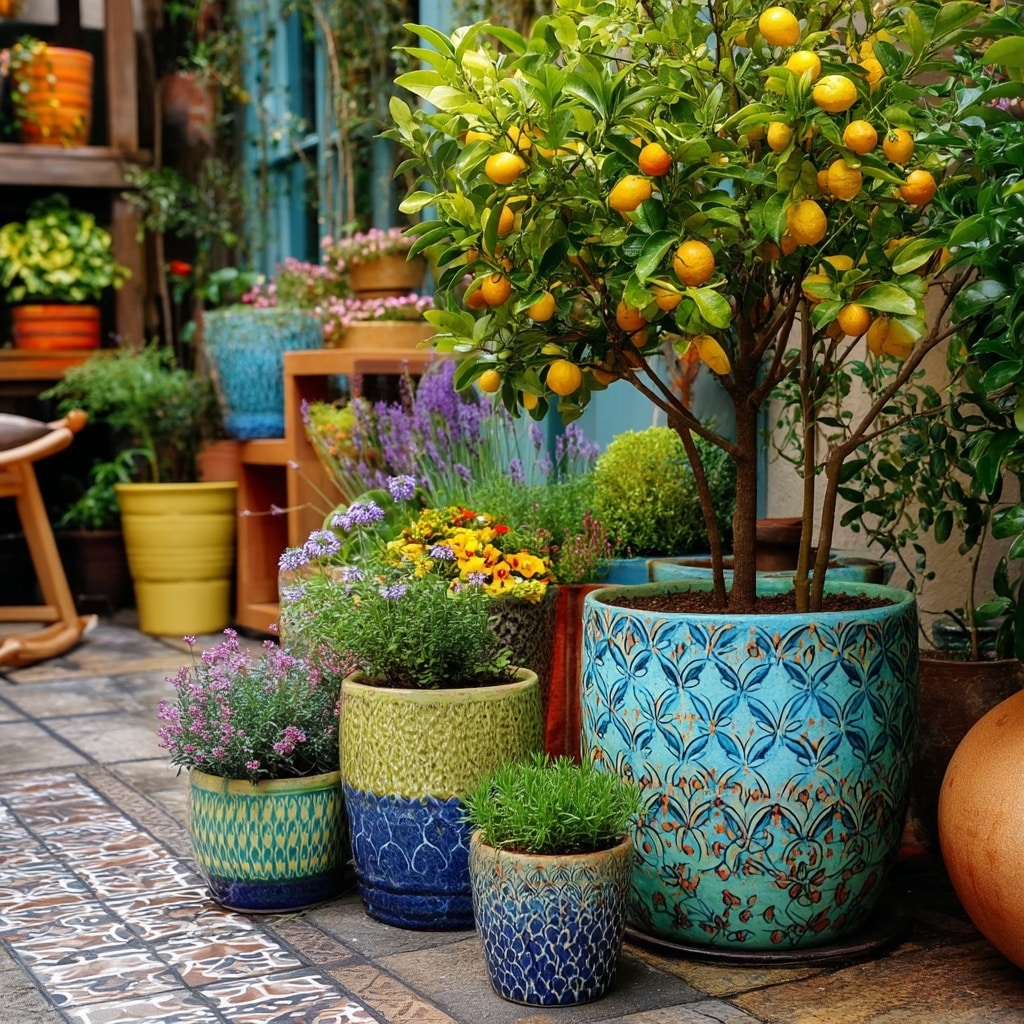
Container gardening offers unmatched flexibility, making it one of the most accessible ways to grow a home garden—especially if you’re short on space or renting your home. From balconies and patios to window sills and stairways, containers can transform nearly any area into a lush, blooming retreat.
The biggest advantage? Mobility. You can easily rearrange pots to follow the sun, protect delicate plants from harsh weather, or update your garden’s layout as the seasons change. Choose containers of varying sizes, shapes, and materials to add texture and visual interest. Terra cotta, ceramic, wood, or upcycled items like buckets and crates all work beautifully.
This method is perfect for growing herbs, flowers, dwarf fruit trees, and even compact vegetables like cherry tomatoes or lettuce. Just ensure your pots have drainage holes, and use a lightweight, nutrient-rich potting mix to support healthy roots.
Whether you’re starting small or building a full patio garden, container gardening gives your home garden a modern, manageable, and highly customizable approach.
Fairy Gardens: Whimsical Touches for All Ages
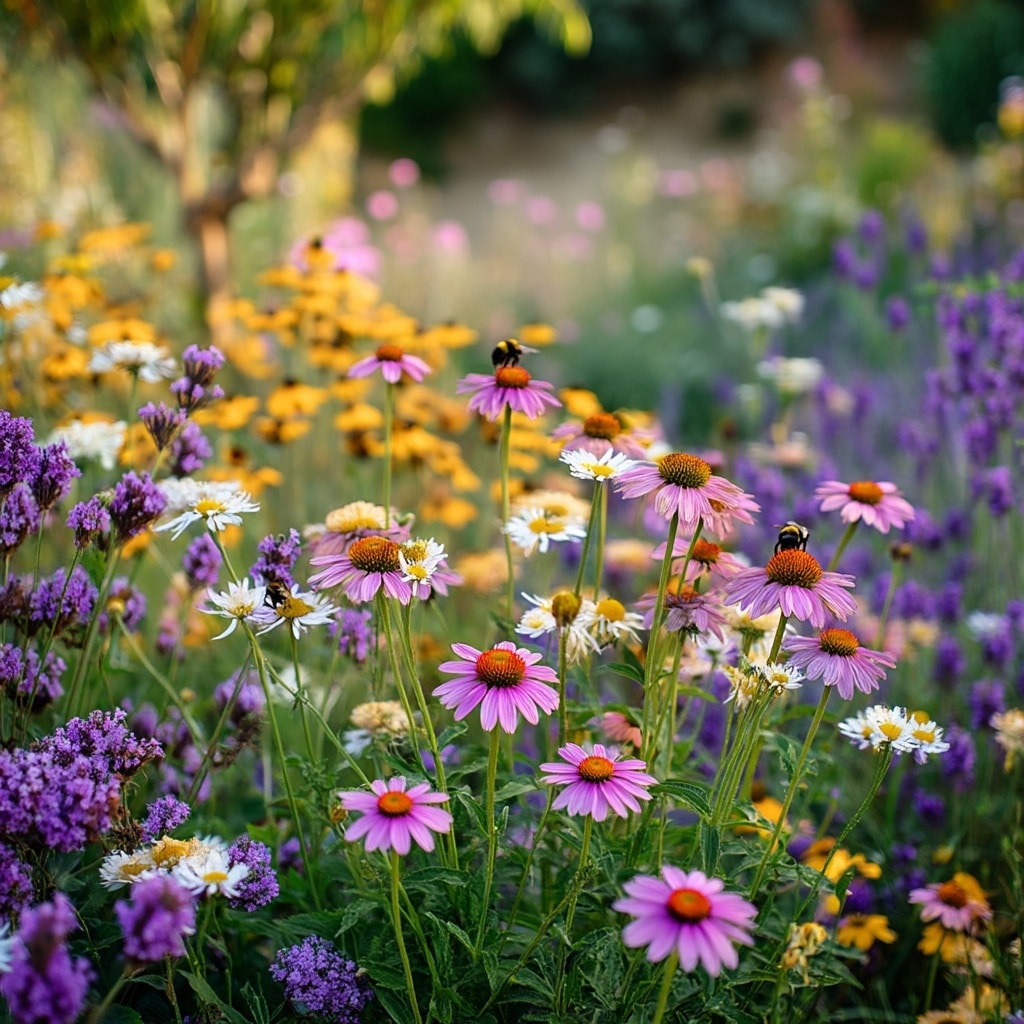
If you’re looking to infuse a bit of magic into your home garden, fairy gardens are the perfect touch. These miniature landscapes turn even the smallest nooks into enchanting scenes, appealing to kids and adults alike.
You can start a fairy garden in a shallow container, flower bed corner, or even an old birdbath. Use small-scale plants like baby’s tears, moss, or miniature succulents, which mimic the look of trees and shrubs in a tiny world. Add charming details like fairy figurines, tiny houses, pebble paths, and miniature benches to build out the scene.
What makes fairy gardens so enjoyable is the creativity involved. They’re a great DIY project, encouraging imagination and providing a relaxing activity for gardeners of all ages. Best of all, they don’t require much maintenance and can easily be updated seasonally with new decorations.
Whether nestled under a tree or displayed on a windowsill, a fairy garden brings a playful, personal touch to your home garden while sparking joy every time you see it.
Succulent Gardens: Low Maintenance Beauty

For those who want a stunning home garden without the high upkeep, succulent gardens are a perfect fit. These hardy plants are known for their ability to store water, making them ideal for dry climates or busy lifestyles.
Succulents come in an incredible variety of shapes, colors, and textures—from rosette-shaped echeverias to trailing string of pearls. By mixing different types, you can create eye-catching arrangements that resemble living sculptures. They thrive in containers, rock gardens, or shallow beds with well-draining soil.
One of the biggest perks of a succulent garden is how little water and attention it needs. Overwatering is actually more of a risk than neglect. Most varieties prefer full sun but can tolerate partial shade, making them adaptable to many settings.
To elevate the design, pair succulents with decorative rocks, driftwood, or gravel. Their sculptural form and low-maintenance nature make them an excellent addition to patios, balconies, or even indoor displays—adding year-round charm to your home garden.
Butterfly Gardens: Attracting Nature’s Beauties
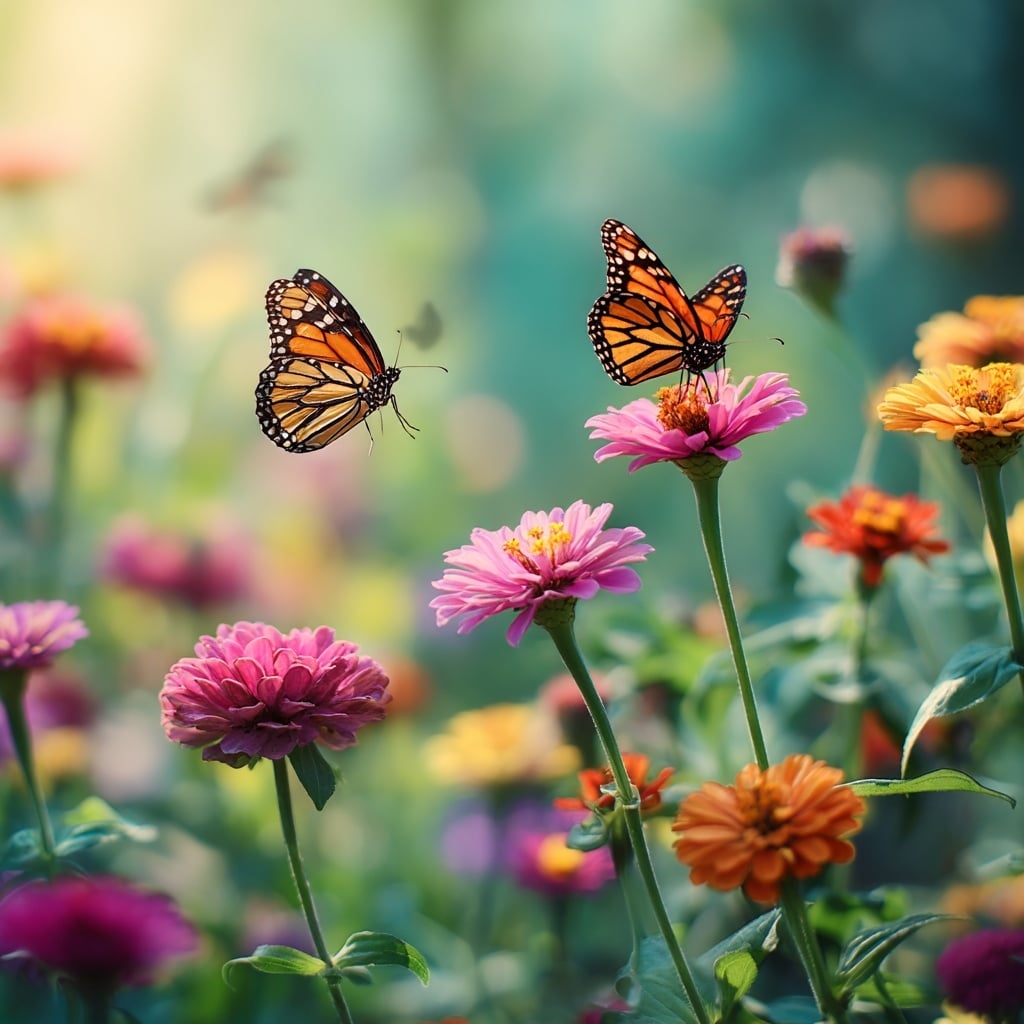
A home garden isn’t just for your enjoyment—it can become a thriving habitat for butterflies, too. Creating a butterfly garden is a rewarding way to bring movement, color, and life to your outdoor space while supporting local ecosystems.
To attract butterflies, plant nectar-rich flowers like zinnias, marigolds, and milkweed. These vibrant blooms not only draw in butterflies but also support their life cycles. Including host plants, such as parsley or dill, gives caterpillars a safe place to grow, ensuring repeat visitors to your garden.
Butterflies also need shelter and hydration. Provide flat stones for sunbathing and shallow dishes of water for sipping. Avoid pesticides, as they harm pollinators and disrupt the delicate garden balance.
For best results, use a mix of flower heights, colors, and bloom times to keep your butterfly guests returning from early spring through late fall. With a few thoughtful choices, your home garden can become a peaceful sanctuary for both humans and nature’s most graceful guests.
Edible Landscaping: Gardening Meets Aesthetics
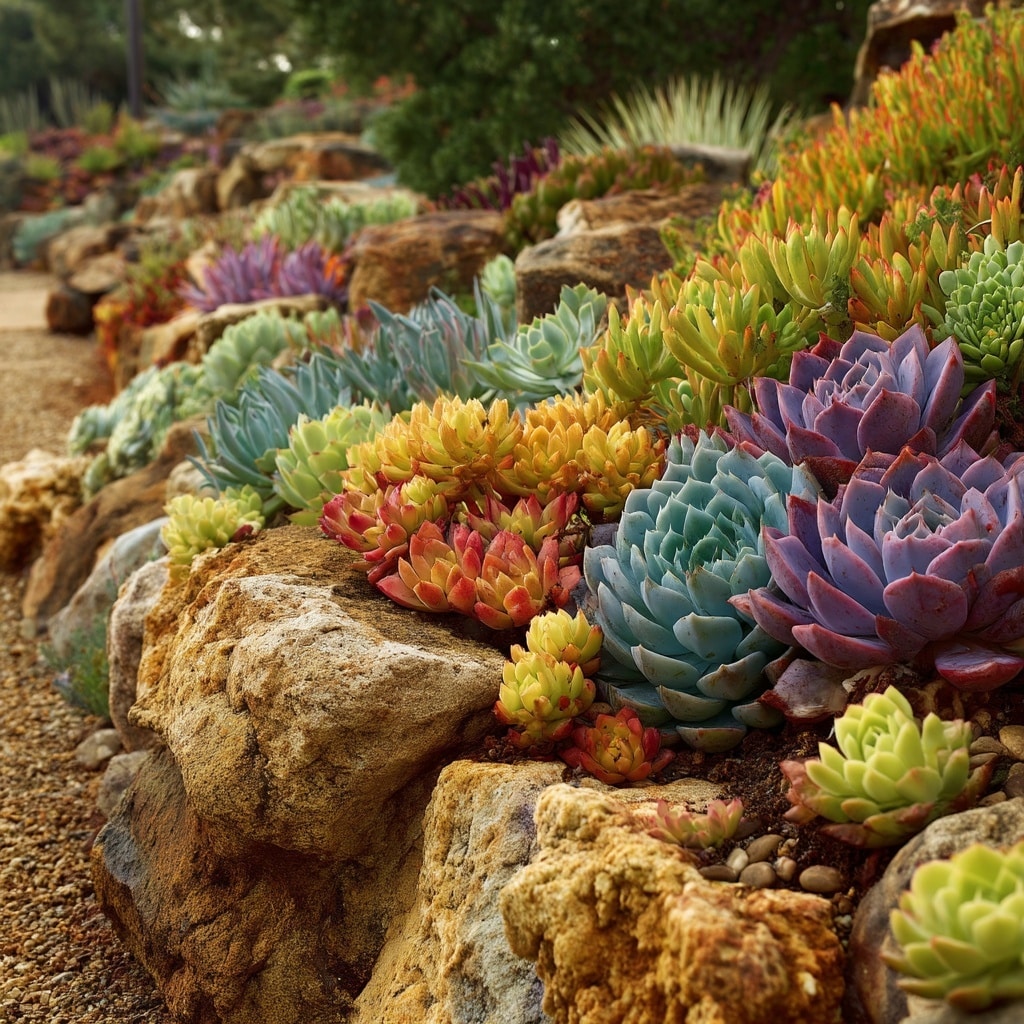
Edible landscaping blends the beauty of ornamental gardening with the practicality of growing your own food—an ideal strategy for a functional yet attractive home garden. Instead of separating vegetables and herbs from flowers, this method weaves them together into a cohesive, stylish landscape.
You can start by incorporating colorful edible plants like rainbow chard, purple basil, or nasturtiums alongside your flowers. These not only add visual interest but are fully harvestable. Fruits like strawberries or dwarf blueberries can serve as edible ground cover or hedge borders, while climbing vegetables like cucumbers and peas look stunning on trellises.
Strategic companion planting helps create natural pest barriers and boosts overall plant health. For instance, planting marigolds with tomatoes can deter pests, while growing basil near peppers can enhance flavor.
Edible landscaping is perfect for smaller spaces where every square foot matters. It turns your home garden into a productive, beautiful, and sustainable space that feeds both your body and your eyes.
Raised Bed Gardens: Efficiency and Accessibility
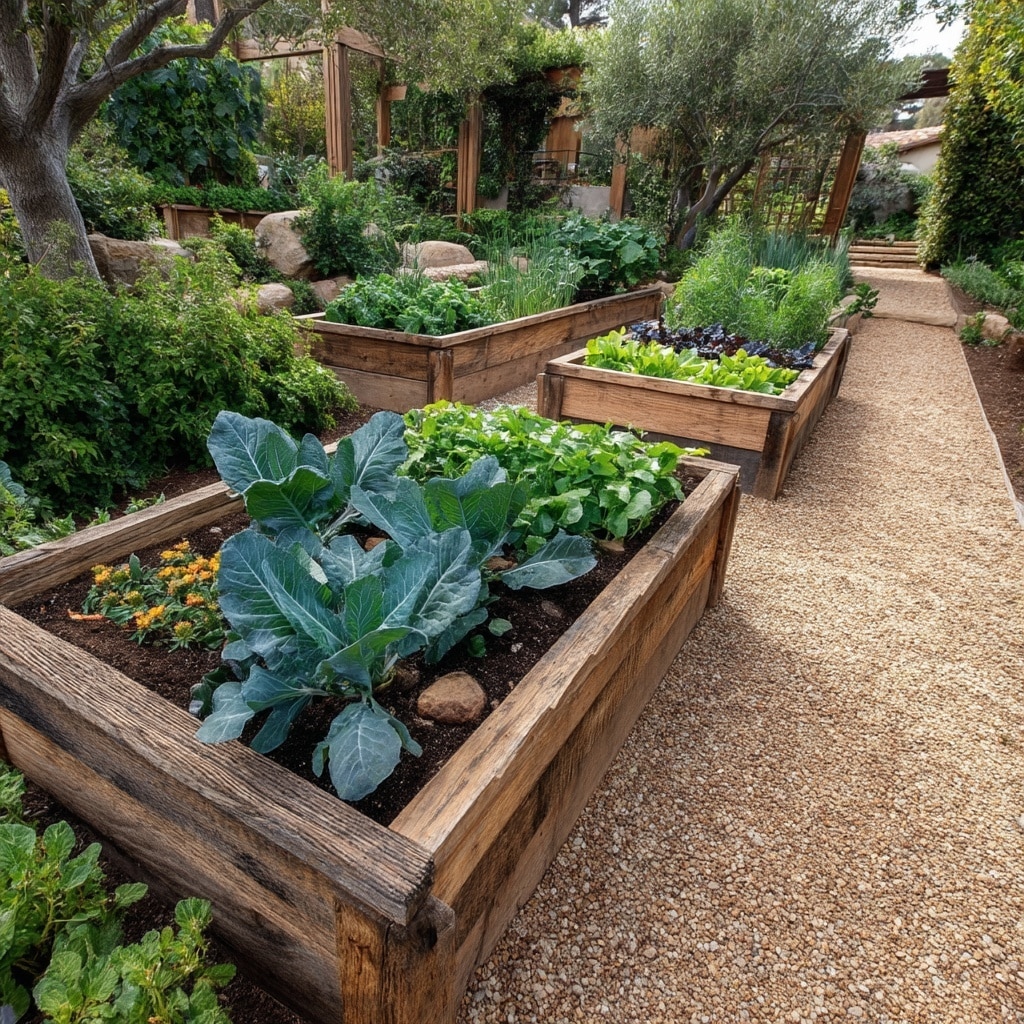
Raised bed gardening is a smart solution for anyone looking to make their home garden more organized, efficient, and easy to maintain. By elevating the planting area above ground level, you gain greater control over soil quality, drainage, and layout—especially useful in areas with poor or compacted soil.
These beds can be built using wood, stone, or recycled materials, and they’re perfect for growing everything from herbs to root vegetables. Because the soil stays loose and drains well, plants grow faster and healthier. Plus, the structure helps prevent weeds and pests from spreading as easily.
One of the biggest benefits is accessibility. Raised beds reduce the need to bend or kneel, making gardening more comfortable for older adults or those with mobility challenges. They’re also a great fit for small yards or patios, allowing for maximum use of space with minimal upkeep.
With a bit of planning, raised beds can make your home garden not just beautiful, but also incredibly efficient and productive.
Pollinator Gardens: Supporting Essential Wildlife
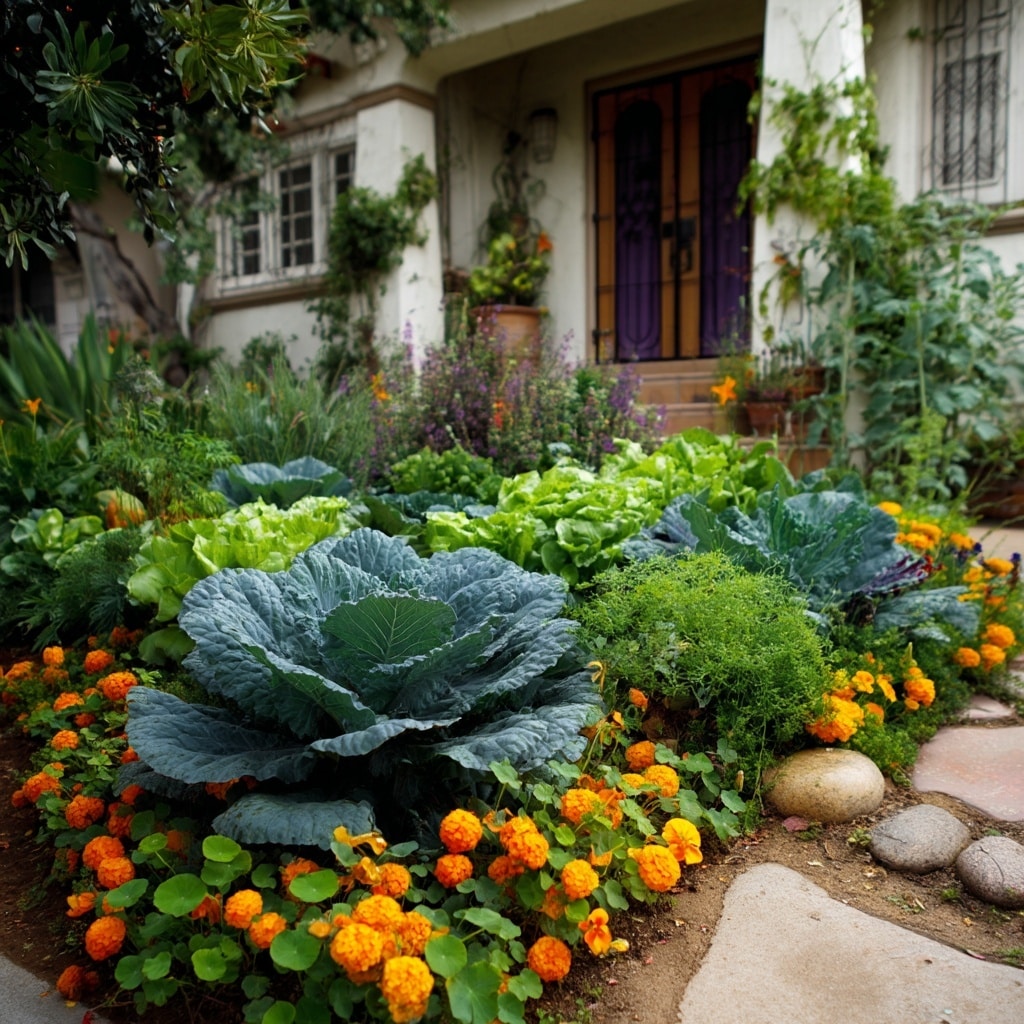
A thriving home garden can do more than beautify your space—it can play a vital role in protecting pollinators like bees, butterflies, and hummingbirds. A pollinator garden is designed to attract and support these essential species, which are critical for plant reproduction and healthy ecosystems.
To build one, start by planting native wildflowers and pollinator-friendly blooms that offer nectar and pollen throughout the growing season. Choose a mix of early, mid, and late-blooming species to provide food from spring through fall. Coneflowers, black-eyed Susans, bee balm, and lavender are all excellent options.
Pollinators are sensitive to chemicals, so it’s important to avoid pesticides and opt for organic gardening practices. Add birdbaths, shallow water dishes, or small ponds to offer hydration. Varying plant heights—like low-growing herbs and tall flowering vines—creates a more inviting, layered habitat.
By adding a pollinator garden to your home garden, you’re not only enhancing its beauty, but also contributing to the health of the environment and the food supply chain.
Hydroponics: Soil-less Growing for Urban Spaces
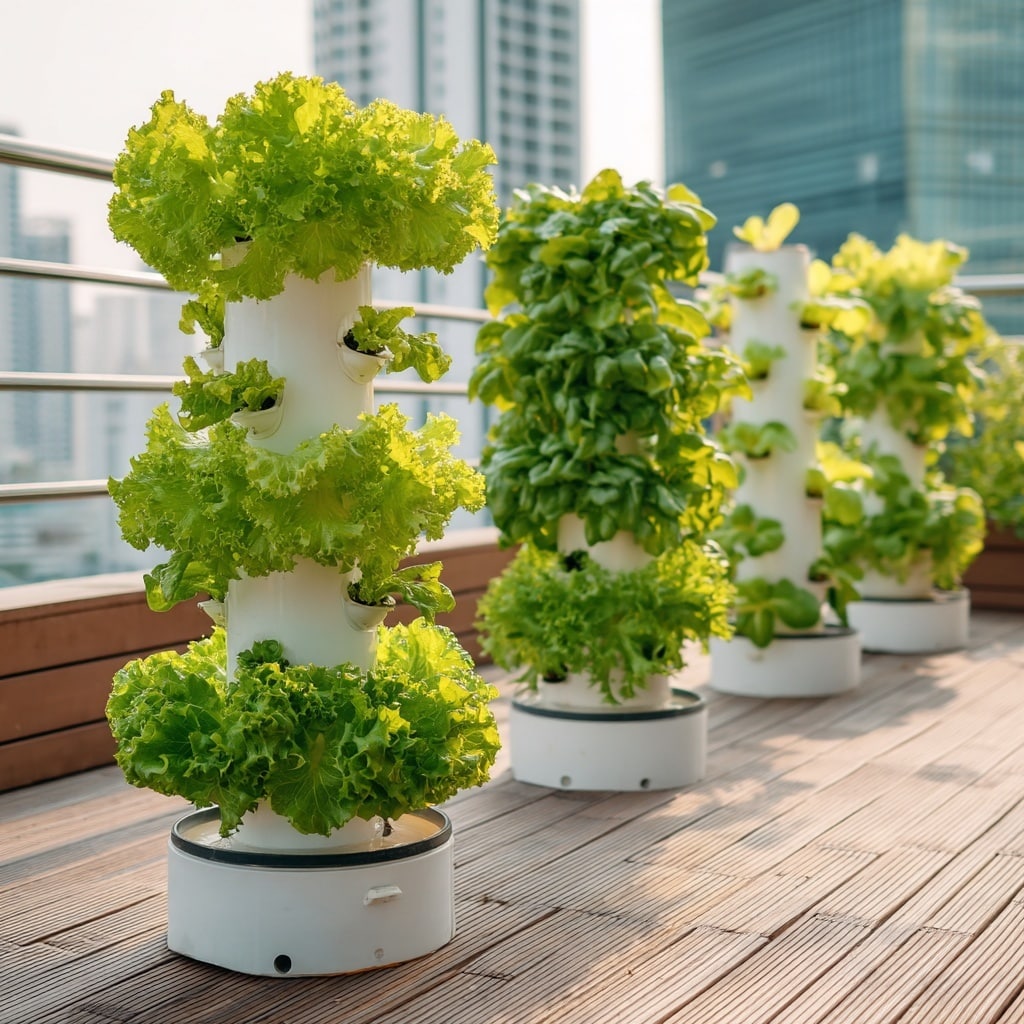
Hydroponics offers a cutting-edge way to garden—especially valuable for urban dwellers who lack traditional planting space. This soil-free method lets you grow a wide range of vegetables and herbs in nutrient-rich water, making it an innovative addition to your home garden setup.
Using vertical frames, grow towers, or wall-mounted systems, hydroponics maximizes vertical space just like traditional vertical gardens. It’s ideal for growing leafy greens like lettuce, spinach, and basil, which thrive in water-based systems and mature quickly. Indoors or on a balcony, hydroponics allows you to cultivate a highly productive garden year-round with minimal space.
This method also conserves water—using up to 90% less than traditional gardening—and reduces the risk of soil-borne pests and diseases. For beginners, countertop kits are available to get started easily, while more advanced gardeners can build custom systems.
If space and soil are limited, hydroponics offers a clean, efficient way to enjoy a flourishing home garden, even in the heart of a city.
Conclusion
Building a beautiful and productive home garden doesn’t require acres of land or a huge budget—just a bit of creativity and thoughtful planning. Whether you opt for vertical gardening, whimsical fairy setups, or edible landscaping, each idea can bring personality, function, and serenity to your space.
Gardening also connects you with nature, supports local pollinators, and can even provide fresh ingredients for your meals. No matter the size of your space—be it a sprawling yard or a compact balcony—there’s a home garden style that will work for you.
Start with one idea, make it your own, and watch your outdoor (or indoor) space transform into a vibrant retreat. Gardening is a journey, not a race—and your home will thank you for it.



